
 Podcasts
PodcastsCatch the latest PR news & updates with PRovoke Media's PR Podcasts. Lifting the lid on key industry stories & trends, join our listeners of PR podcasts today.
 Videos
VideosLatest video interviews and campaigns from PRovoke Media, previously known as the Holmes Report.
Long-form journalism that analyzes the issues, challenges and opportunities facing the business and practice of PR.
 Profiles & Interviews
Profiles & InterviewsExplore PR profiles and interviews with leaders from the marketing and PR worlds.
 Crisis Review
Crisis ReviewPR Crisis & Business Crisis review. PRovoke Media's annual analysis of the top reputation crises to rock the corporate sector. Read on here.
 Coronavirus
CoronavirusPRovoke Media's coverage of the Covid-19 crisis, focusing on corporate communication, public affairs & PR industry fallout.
 Trend Forecasts
Trend ForecastsPRovoke Media's PR Trends round up. PRovoke Media's annual forecast of PR trends and news that will impact the PR world in the year ahead...
 Social & Digital
Social & DigitalDedicated to exploring the new frontiers of PR as it dives deeper into social media, content and analytics.
 Technology
TechnologyOur coverage of key technology PR trends and challenges from around the world of digital communications.
 Consumer
ConsumerFrom brand marketing to conscious consumerism, coverage of key marketing and PR trends worldwide.
 Employee Engagement
Employee EngagementPRovoke Media's coverage, analysis and news around the rapidly-shifting area of employee engagement and internal communications.
 Sports Marketing
Sports Marketing Sports PR news, diversity & inclusion trends, views and analysis from PRovoke Media. Subscribe today for the very latest in the world of sports communications.
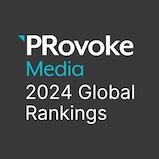 Global PR Agency Rankings
Global PR Agency RankingsPRovoke Media's definitive global benchmark of global PR agency size and growth.
Enter PRovoke Media's 2024 Global 250 Agency Ranking and/or our Agencies of the Year competitions now.
 Agencies of the Year
Agencies of the YearPRovoke Media's annual selections for PR Agencies of the Year, across all of the world's major markets.
 Innovator 25
Innovator 25PRovoke Media profiles marcomms innovators from across North America, EMEA and Asia-Pac.
 Creativity in PR
Creativity in PRIn-depth annual research into the PR industry's efforts to raise creative standards.
 Asia-Pacific Communication Index
Asia-Pacific Communication IndexAPACD/Ruder Finn annual study of Asia-Pacific in-house communications professionals.
 SABRE Awards
SABRE AwardsThe world's biggest PR awards programme, dedicated to benchmarking the best PR work from across the globe.
 PRovokeSummit Global
PRovokeSummit GlobalThe biggest PR conference of the year, a high-level forum designed to address the critical issues that matter most.
 PRovoke Media Regional Series
PRovoke Media Regional SeriesA global network of conferences that explore the innovation and disruption that is redefining public relations.
 Agencies of the Year
Agencies of the YearUnrivalled insight into the world's best PR agencies, across specialist and geographic categories.
 Roundtables
RoundtablesOur Roundtables bring together in-house comms leaders with PR firms to examine the future of communications.
 Agency Playbook
Agency PlaybookThe PR industry’s most comprehensive listing of firms from every region and specialty
.jpg) All Jobs
All JobsFind the latest global PR and communications jobs from PRovoke Media. From internships to account executives or directors. See all our PR jobs here.
PRovoke Media's editorial series published in collaboration with partners.
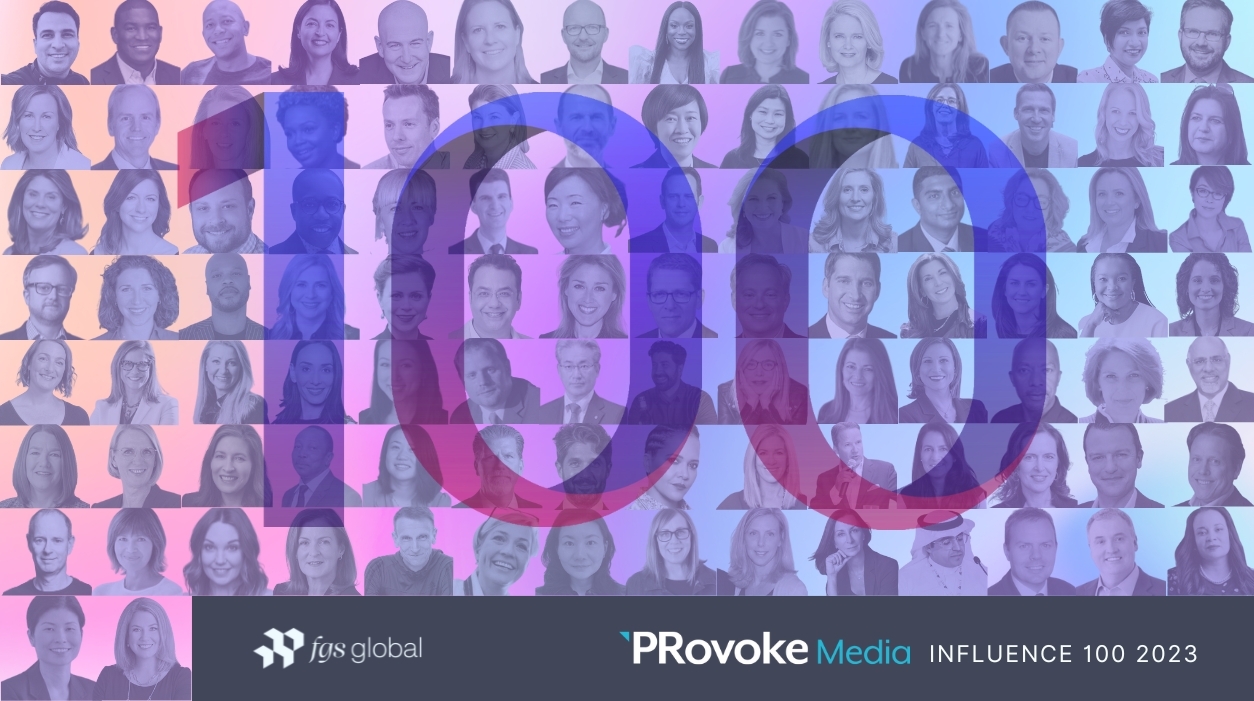
The following data is based on responses from a survey sent to this year's Influence 100, and where applicable, further analysis. Some percentages might not equal exactly 100% due to rounding.
The following data is based on responses from a survey sent to this year's Influence 100, and where applicable, further analysis. Some percentages might not equal exactly 100% due to rounding.
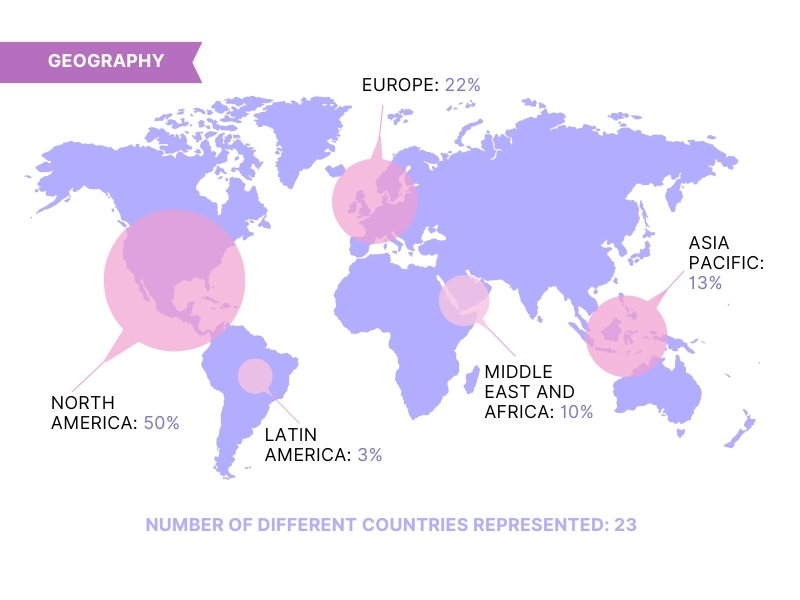
Around a quarter of the Influence 100 are new entrants this year – although a handful are re-entries who are now in different high-profile roles. Unsurprisingly, North American CMOs and CCOs remain dominant, although down to 50% of the list from 57% two years ago, as other regions begin to chip into US dominance.
Latin American and Asia Pacific representation remain at 3% and 13% respectively this year. EMEA has also increased by one percentage point to 32% this year, with European leaders down from 24% to 22% (including 8% from the UK) and Middle East and North Africa representation up from 7% to 10%.
Overall, 23 countries are now represented in the 2023 data, demonstrating the global reach and power of the industry.

The representation of women in the Influence 100 continues to rise, and this year we have an all-time high of 61 powerful women in global comms leadership roles (up from 57% last year), compared with 39 men (compared to 43% last year). This upward trajectory has been building since 2020, when 54 were women. It’s hard to believe given this rise that in 2019, women were in the minority, with only 47 female influencers listed.
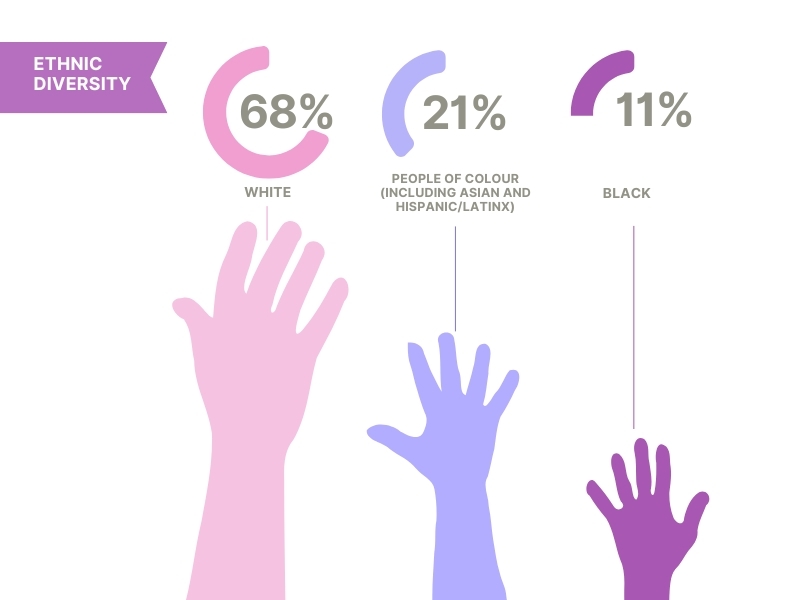
We’re committed to increasing the visibility of Black and ethnic minority comms professionals, but we find this a challenge within the Influence 100 given that it prioritises the heads of communications and marketing functions. For that reason we do apply a certain amount of conscious bias towards representation, looking at a wider range of job titles than CMO or CCO. Not only does this make the Influence 100 more diverse, but it also reflects the evolution of the PR industry itself.
This year, then, it’s disappointing that our representation has slipped and 68% of our influencers are white, up from 62% last year. When we launched the Influence 100, 12 years ago, around 90% of the list was white. Our efforts to address this imbalance are working, but not quite as fast as we would like: this year, we’ve beaten our target of 25% people of colour, who make up 32% of this year’s list, but within this we’re slightly short of our target of 15% Black representation, which this year stands at 11%.
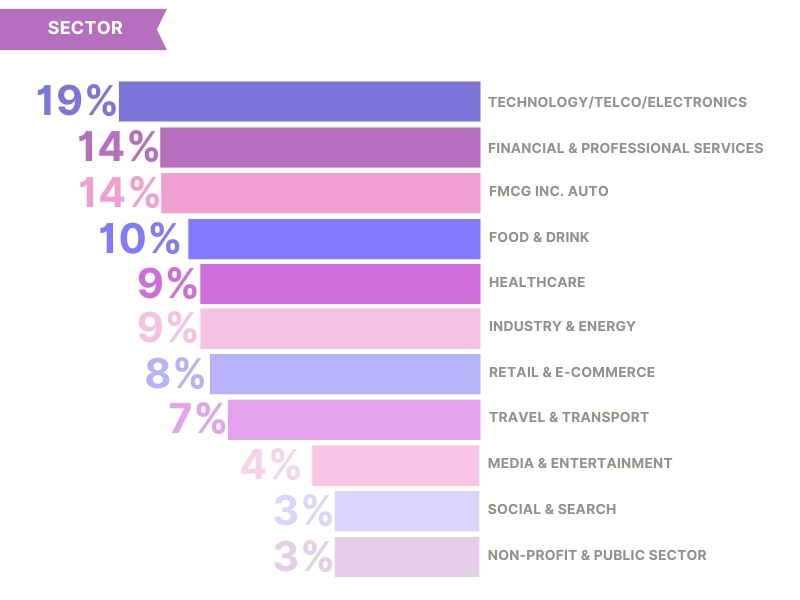
Our sector categories focus on what the organisations our influencers work for actually do or sell, not how they do it or whether their audience is B2B or consumer. For example, we count Amazon as a retailer, Grab as a transport company and PayPal as a financial services company.
Our categories split out mainly consumer-facing brands, including putting FMCG (including fashion and beauty) and automotive together but separating out food and drink, and media and entertainment. Our ‘social and search’ category includes Google, Facebook and LinkedIn, rather than putting them in the technology cohort. While arguably practically every company is a technology company to some extent, our technology category is old-school: traditional hardware and software companies, plus telecoms and electronics.
The split between sectors hasn’t changed dramatically since last year. Tech has increased by 1% to 19% and is still the biggest share of the table. FMCG including auto and financial and professional services come in joint second place (last year the latter was just 1% above FMCG). Healthcare saw a slight dip from 11% to 9%, while the industry and energy category rose from 5% to 9%.
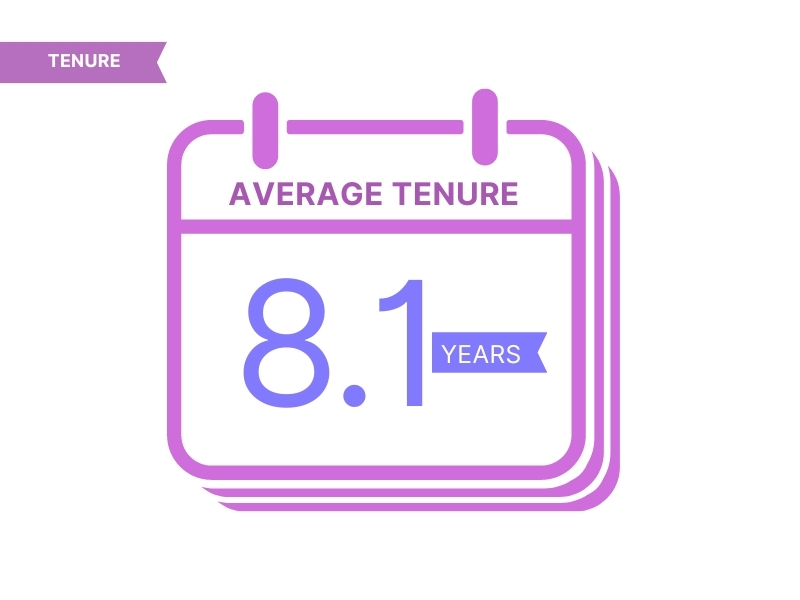
Perhaps unsurprisingly for a global influencer list, our communicators and marketers have been with their current companies on average for 8.1 years – almost the same as last year, despite the changes to the line-up. The longest-serving influencers on our list include Masayoshi Shirayanagi, who has been with Toyota for 39 years; Conny Braams, who has notched up 32 years at Unilever (although she will be leaving this summer); Jan Runau, who has been with Adidas for 31 years; Joseph Evangelisti, who has been with JP Morgan Chase for 33 years; and Bea Perez, who has worked at Coca-Cola for 29 years.
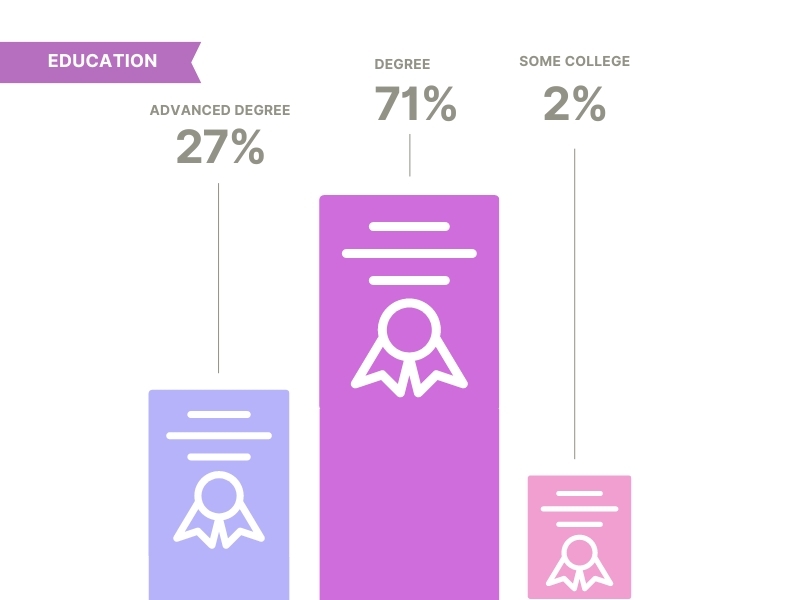
While almost all of our Influence 100 are educated to at least degree level, a small number have proved it’s possible to get to the top without a college or university education, with 2% (down from 3% last year) saying their highest formal qualification was “some college”. There’s been movement at the very top of the educational pecking order too, as 27%% of this year’s cohort held advanced degrees, down a little from 30% last year. The number of entrants with a first degree has jumped again, however, from 67 to 71%.
In terms of subjects for study, there is a clear bias towards degrees focused on communications, followed by political science/public policy and English literature; law and marketing are also well represented. There are several linguists among our cohort, with studies in Japanese, French and German represented, as well as a handful of pure scientists and economists. Psychology, sociology, sports management and accountancy are also on the list, and several of our influencers also have a MBA or other business or management qualification.

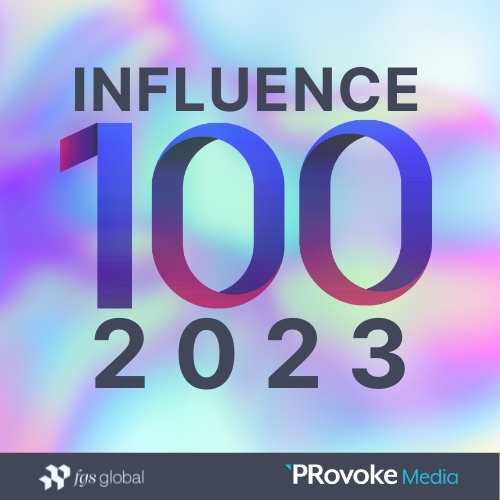
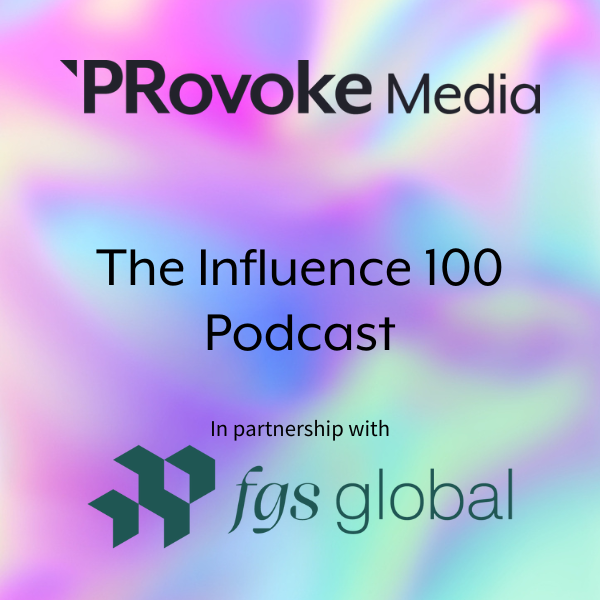

Intelligence and insight from across the PR world.
About PRovoke Media Contact Us Privacy & Cookie PolicyWe feel that the views of the reader are as important as the views of the writer. Please contact us at [email protected]
Signup For Our Newsletter Media Kits/Editorial Calendar Jobs Postings A-Z News Sitemap© Holmes Report LLC 2024